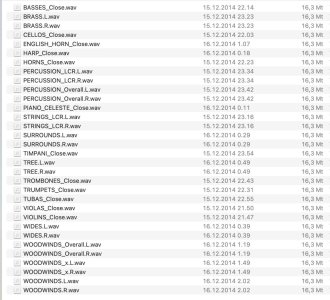Alex Niedt
Senior Member
I've noticed sooo many people on this forum have a fundamental misunderstanding of this topic. You're not meant to use 20 mics simultaneously for all your instruments. Depending on available mics, picking a different set can sometimes yield a radically different sound than the default. Not everyone wants the same sound or works in the same genre. Just because you don't want or need options doesn't mean other people don't. And in the case of Orchestral Tools, if you don't want certain mics, you don't have to download them. I recall recently seeing posts here about how "nobody wants" the Pop Close mic option in the Abbey Road percussion libraries, while that's literally one of the top selling points for me. And the funniest thing is while many people don't want to mess with mics, they'll process their orchestral samples to death when they could have taken a few minutes to choose more contextually appropriate mics to begin with and then basically leave them alone.




 . It's also easier on CPU, RAM and disks.
. It's also easier on CPU, RAM and disks.


